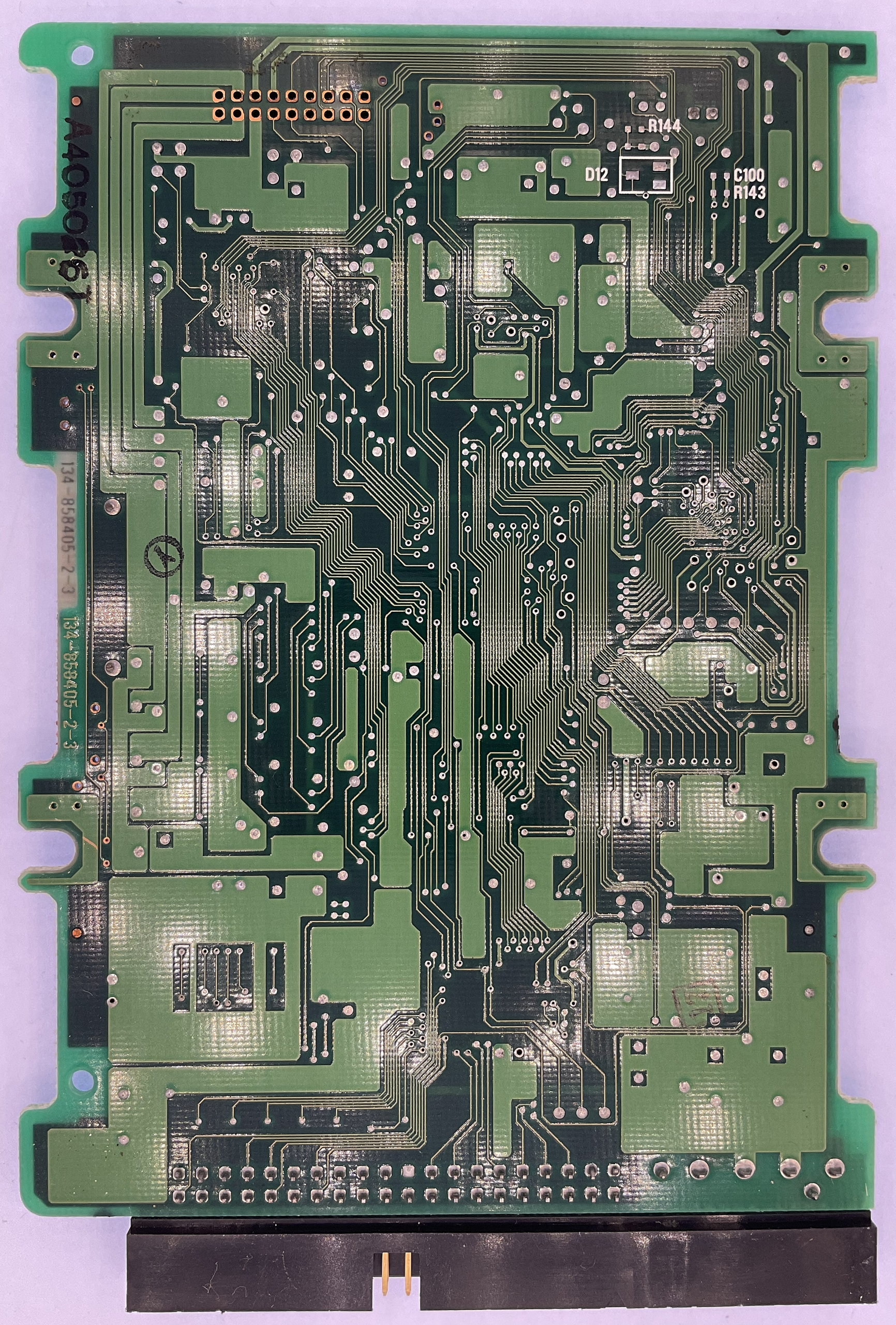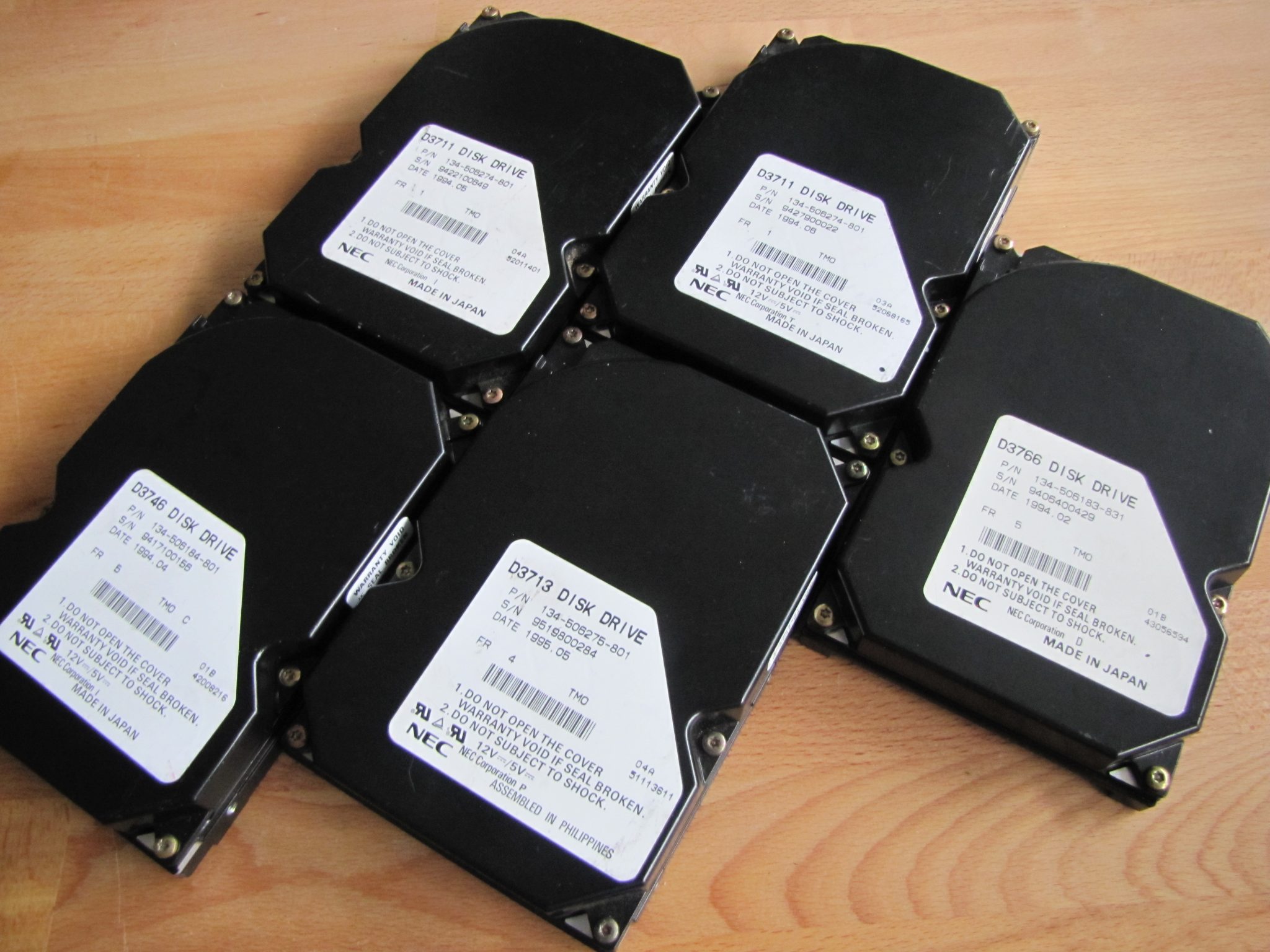The NEC D3711 is one of NEC’s many offerings from the early-mid 1990’s, with this model being on the lower-end side. While many of these have been covered on this site before, this is a perfect specimen for showing the insides & expectations of a particularly rare model. How did NEC do in the early-mid 90’s?
Finding one of these in functional condition seems to be somewhat of a challenge, but fortunately this one lives on for now.

Drive Attributes
-------------------------------------
NEC D3711
-------------------------------------
Capacity 170MB
Mfc Date 1994-06
Format 3.5"
Interface PATA
Platters 1
Heads 2
Cache 128KB
RPM 4090
CHS 2254/2/63 (native)
335/16/63 (translated)
Origin Japan (NEC)
-------------------------------------
Similarly to Fujitsu and Conner Peripherals designs at the time, NEC installed the mechanics of the drive onto a base plate with a cast lid on top. It’s a well tested concept which isn’t necessarily a defecit.
A single platter is all this drive has to offer, spinning at a rather unique 4090 RPM.

NEC always clearly marked the manufacture date on their drives, which is an appreciated aspect from a woefully useless label. This example hails from 1994, being built in NEC’s factory in Japan.
During the time NEC used this drive design, they slowly switched primary production to the Philippines, under Tsukiden Electronics Industries, Inc. (TEII) as their contractor. Obviously, this was done to save costs.



NEC’s PCB layouts continue to be a personal favourite, with a very clean overall design. NEC’s connector housings at this point in time were quite excellent too.

With the PCB removed, we see the usual NEC choice of PM DM-T for the spindle motor. An interesting point of note with these models is that the spindle motor & head stack connections are combined into one socket. It makes removal of the PCB a very easy task, with no fiddly ribbon cables to deal with. It’s absolutely phenomenal.

This board offers a lot, with the usual external LED header being present at point J8 to the south of the PCB. Cirrus Logic handle the interface controller, Sony for the main microcontroller and Seiko Epson for the 128KB of cache.

There’s not much of note on this side, but had NEC flipped the boards so that logic faced inwards, these would have been quite the sleek models!


Before moving onto how these look inside, to say this example is in excellent health would be an understatement. It’s doing well, 30 years later!

All of the drives in this series (alongside future density refreshes) share identical top plates, aside from their model stickers of course. If you ever pick up one of these drives, it’s important to be careful when concerning the label, since it’s one tear away from immediately penetrating the drive seal.

Looking inside one of these demonstrates the relatively simple design these drives had at this point.

Unfortunately, this failed example has had its top head detach from the actuator arm. A tragic fate indeed.

NEC had the capability to be their own supplier for the majority of electronic components within hard drives, which is certainly a beneficial prospect. This is present throughout their drive history until their original designs ended in 1997.

After removing the magnet and bumper assembly, the actuator itself is built from plastic and machined aluminium.

Pulling the magnet apart gives access to the rubber-gromet covering the metal bumper. Fortunately, these haven’t degraded at all (on any of these drives, I’ve pulled apart either), so it seems rubber-rot isn’t necessarily an issue imminently for these. It will likely be a future potential issue eventually, however.

After so many attempts, documenting one of these can finally be completed. Having gone through so many of these drives, it has been somewhat of a sour chapter concerning personal experiences with NEC models. Regardless, seeing what these are truly capable of is something positive, after the negativity of losing so many examples already.
These drives primarily found use in NEC’s PC series found within Japan. It makes sense that these drives are nearly unobtainable outside of the country, seeing that NEC’s domestic PC line was the dominant force in Japan at the time. The one shown working in this post came in an NEC PC-9801 caddy, suggesting its past was much the same as what is expected of these models.
For those who wish to pick up a similar drive one day, I can only wish you good luck.
If you missed the video I made on this drive, you can find it here: